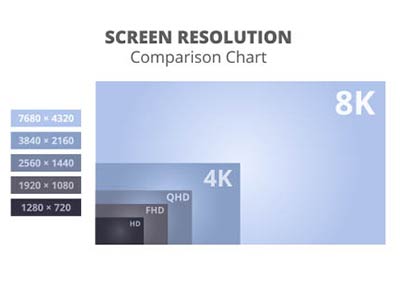Modern control rooms are critical command bases for many organizations, where precision and reliability govern the seamless operation of complex systems. When deploying new control room infrastructure, planners and integrators should ensure that the end result will address the immediate requirements of a mission-critical AV communications and control facility and that it can grow and evolve economically to continue meeting those needs.
Today’s control room operators demand workspaces that are not only functional but also ergonomic. The focus is on creating environments that allow for faster access, simpler interfaces, and more efficient switching between tasks, increasing overall productivity and accuracy. A simpler workspace may have less equipment on the operator desk with consolidated screens from different sources or video walls to enhance collaboration. Ultimately, operator workspaces must be intuitive and conducive to long hours of operation without sacrificing performance. As companies rethink control rooms, virtual reality is increasingly used as an interactive aid in workspace layouts.

Protecting valuable computer hardware and software assets is a main concern of businesses today. To keep physical computers free of dust and debris and to guard them against hacker threats, many businesses house their computers and servers securely in a server room or closet away from user workspaces and active control rooms. Workspaces remain clean and secure without any extra heat or noise generated by computers/servers. Servers placed in a separate location where unauthorized individuals cannot access them boosts security. Only those employees with top clearances for server rooms can access the servers/computers.

Cybersecurity in control rooms is a trend that is expanding exponentially. With cyberthreats to businesses multiplying daily, best practices compel organizations to set up rock-solid security measures via specialized software and reduced (or no) user access to sensitive hardware. Most companies today prohibit the use of USB drives to transfer data between computers. Instead, secure data transfer is ported over secure IP connections that comply with mandatory security measures.
In addition to cybersecurity, reliability is a major concern of businesses. Using console servers to access servers even when a network is down is one way of guaranteeing reliability and continuity of connections. Using virtual machines also enhances reliability by removing the hazards of hardware failures from the equation.
Fail-safe operations and maximum uptime are vital in mission-critical control room applications, so it is important to plan for network resiliency at every level, all the way up to complete switchover from one control room to a backup control room location. The IP KVM infrastructure should incorporate redundant network interfaces supporting both CATx and fiber connections through SFP slots.
Redundant paths and server endpoints allow for fail-safe backup, and the pooling of multiple IP KVM transmitters and sources can provide operators with capable alternate systems if a computer crashes or is unavailable for use. Redundant power supplies with status monitoring can help keep all systems online. An IP KVM management system likewise can provide critical status alerts to prevent failures or bandwidth shortages that can hinder performance and productivity.

Virtualization and cloud services are becoming a staple in modern control rooms, facilitating more efficient data hosting and license sharing through virtual machines (VMs). This trend not only enhances operational efficiency but also significantly reduces hardware dependency, leading to cost savings and improved disaster recovery processes.
Not every control room planner is looking to move right into virtualization, but its benefits are difficult to ignore. The two primary reasons companies consider virtualization are cost and energy savings. Virtual machines are more economical than traditional servers, so they make a compelling solution for reducing overhead and hardware costs. By replacing physical servers with less-expensive virtual machines and a centralized system management platform that improves performance, availability and scalability, control room planners and administrators can reduce time-consuming processes and total operation costs. KVM systems that support both virtual and physical servers at the same time, using the same interface, today give operators the ability to switch between these systems without worrying about which is real and which is virtual.
Support for both physical and virtual servers makes it easy to migrate physical servers to virtual machines without any downtime. Administrators simply mirror existing physical servers to virtual machines and, at a certain point, complete a full shift to a virtualized system. System management effectively remains the same; operators wouldn’t necessarily know that they are dealing with a virtual machine. They can turn their attention toward other tasks and concerns.
The zero-client-based approach to virtualization offers another key capability: sharing of virtual machines, with multiple people having access to a virtual machine, simultaneously or sequentially. During testing within the control room environment, for example, this capability would allow several operators to work in tandem as they monitor and manipulate data in a particular virtual machine.

As visual clarity becomes increasingly important, the adoption of 4K and higher resolutions is growing. These high-resolution displays allow for more direct IP video streams, using advanced codecs such as H264/5 to deliver crystal-clear images that are essential for detailed monitoring and decision-making.
With higher resolution displays, the level of detail visible in video feeds is significantly enhanced. In control rooms, where every pixel may convey crucial information, the ability to discern subtle differences in imagery can be the difference between a routine operation and a critical incident. The fine-grained clarity provided by 4K resolutions ensures that users miss nothing, offering a comprehensive overview of the operational landscape.
Modern control rooms must be adaptable to a range of scenarios, and high-resolution displays support this need by offering exceptional scalability. Whether it’s scaling up to accommodate larger screens without losing image quality or compressing video streams to fit multiple feeds on a single monitor, the flexibility provided by these technologies is unparalleled. This adaptability is particularly beneficial in dynamic environments where conditions and requirements can change swiftly.

The integration of IoT and automation technologies is paving the way for intelligent control rooms. These facilities are equipped with automated, event-driven controls that enhance operational responsiveness. With IoT, control room operators can anticipate issues, automate processes, and maintain higher standards of efficiency and security in these spaces with state-of-the-art systems for real-time data analysis and efficient resource management, significantly boosting operational response times. The integration of smart technology facilitates predictive maintenance, minimizes downtime, and ensures seamless communication across networks. As users rethink intelligent control room planning, virtual reality is increasingly used as an interactive aid in planning simulated control room layouts.

An emerging trend in modern control rooms affects the other 6 trends: what is the impact of AI now and in the future?
QUICK FACT: Rethinking control room planning - Virtual reality provides simulated environments to users for creating optimal control room designs. AI makes these user experiences smarter and more interactive.

As we look to the future, these trends underscore a clear trajectory towards more dynamic, responsive, and efficient control room environments. For leaders in industry and government, the integration of these technologies is not merely a pathway to enhanced operation; it is a strategic imperative.
Tom Fitzgerald, Black Box KVM Product Manager commented, “"At Black Box, our objective is to harness these trends to engineer technology that enhances control rooms, ensuring they are efficient, error-free, and environments that are great places to work.”